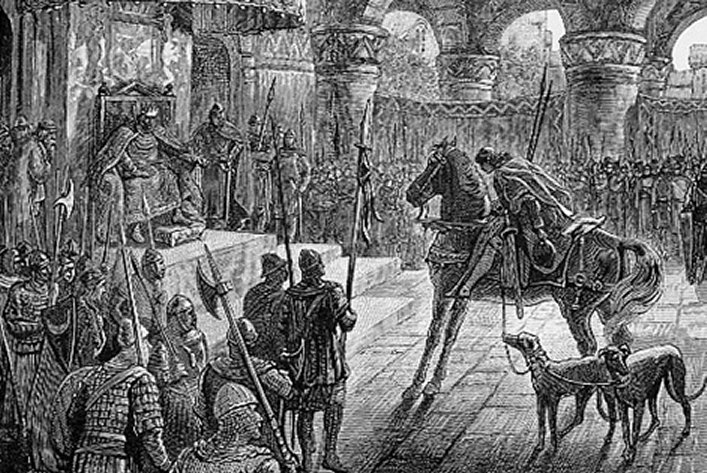Tags

Culhwch meets King Arthur
When I started doing research for Wizards of Wales (which I have now renamed Enchanters of Britain), I started taking a look at a lot of Welsh folktales a lot more closely than I had done before. In exploring them, especially the bizarre romp “Culhwch & Olwen,” I discovered a version of King Arthur that I hadn’t previously known existed, despite being a big King Arthur fan ever since I was a child. Sadly, the original Welsh version of King Arthur has been eclipsed by the knightly romances of Chrétien de Troyes and Sir Thomas Mallory, and by the modern obsession with finding the “real” King Arthur, some British or perhaps Sarmatian warchief fighting against the Saxons back in the 5th century of history. Even the rpg supplement GURPS Camelot, when describing the different interpretations of King Arthur, talked about the historical Arthur, the Arthur of the Romances, and the Arthur of modern pop culture, but never mentioned the Arthur of Welsh myth.
But if you look back at the original surviving Welsh fragments, they are more fantastical than Mallory not less, presenting a folk hero in the style in Heracles or Sigurd, rather than a historical general. “Culhwch & Olwen” is the only early Arthurian folktale that survives in its (more-or-less) entirety, and it presents a court of Arthur filled with demigods, such as the fairy king Gwyn ap Nudd and Manawydan ap Llyr, and with superpowered heroes, with powers ranging from being able to stamp mountains flat to setting themselves on fire.
So what defines the original Welsh Arthurian stuff?
- Fantastical. Fantasy elements surround the characters. Arthur’s champions (even his dog!) have superpowers and they battle fairies and demigods. There are talking animals, armies of werewolves, dragons, numerous giants, and wide variety of wizards and magical artifacts. Not all the stories even take place in the regular world — the heroes travel into hidden enchanted valleys all the time and frequently enter Annwn, the Otherworld.
- Pre-Chivalry. Though the time period of the original stuff is not really defined, it is still clearly not the Middle Ages. There are no tournaments or courtly love, no jousting knights. It’s dark ages warriors going on strange personal quests, contending with the remnants of pre-Christian imagery and slaying monsters less for chivalric reasons and more for personal glory. The later pseudo-historical writings of Geoffrey of Monmouth and others has Arthur battling the invading Saxons and Angles; though not part of the original stories, it still fits very well with it.
- Welsh. The heroes are not English and they certainly do not have the French names and titles that appear in the Romances (Lancelot du Lac, Morgan la Fey, Beaumains, etc.). They are Brythons, the people who became the Welsh and the Cornish, and they have a strong cultural identity.
Perhaps the last is the most important point about the early Arthur stories. They were cultural stories presenting the heroes of the Brythonic people, heroes that defined Welsh and Cornish identity. Though the English later appropriated Arthur for their own purposes, in the original stories he was clearly Brythonic and Celtic. A hero of my ancestors rather than my ancestors’ conquerors.
